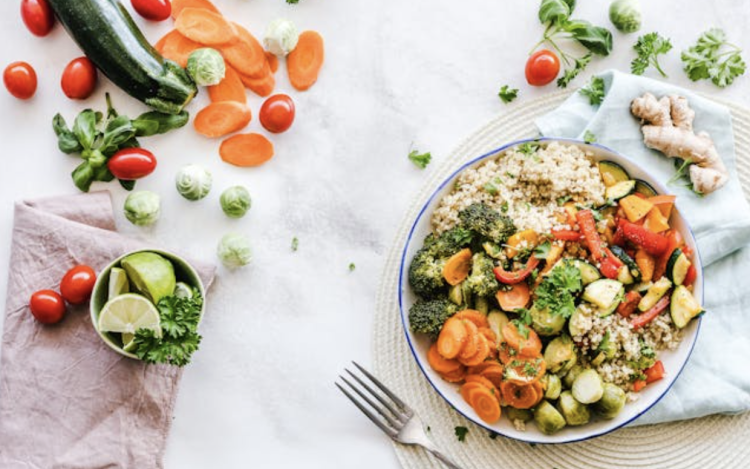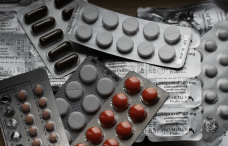Reading food labels is something we all do and some people do it for the wrong reasons, such as worrying about their calorie intake. However, other people completely understand food labels and read them for the health benefits they provide.
As we all know, a well-balanced diet is something we need to have to be healthy and to make positive lifestyle changes. This will help us perform at our physical and mental best. It will also keep us healthy. This is why it is important to read your food labels, because they might be marketed as being healthy but may not be.
Read The Ingredient List
There are many food products out there which often include other ingredients. This is why it changes the natural texture and flavour of that product. Bread, for example, is one of these products. Naturally, bread should consist of flour, water, yeast and salt. They are the only four ingredients that should be included. However, some bread products will include over 10 different ingredients on top of the main four.
Ingredients are essential for our health and we want to ensure we don’t consume too many of the incorrect ingredients. When reading an ingredient list, the main ingredients are higher up the list, sometimes including a percentage. The ingredients further down the list make up very little of the product.
There are many natural ingredients and foods that we can eat. Try to stay away from processed foods, as these tend to have the toxic ingredients you wish to eat. Instead, opt for whole foods such as walnuts, cashews, kidney beans, brown rice, steak, fruit and much more.
Understand The Nutritional Information
This is the section that most people understand but if you don’t, then you should. Our bodies have different requirements based on our build and weight. For example, men should have around 30 grams of fat per day and women should have 20, however, that can vary depending on their size. This is why you should understand your body weight as well as the nutritional information you read on a product.
Too much of a certain macronutrient can impact your body negatively. Even with protein, if you have too much in a day, it can negatively affect your digestive system.
If you read a label and think that it is a lot of fat, think about the other meals you have had throughout the day. You may have had very little fat with the rest of your meals.
You Don’t Always Need To Calorie Count
One of the biggest toxic mindsets in the world of eating food is that we have to count our calories. Women require 2000 calories a day for a maintenance diet, whereas men consume 2500 calories. The human body burns a lot of calories by just doing the basics, such as sleeping and working so this can be quite low for some people, especially those who go to the gym for a workout.
Although counting calories is something you should not be too harsh on, it is something you need to be aware of. On an average day, understand your calorie intake. You also must understand the calories you have on cheat days. We are all allowed a cheat day so don’t worry too much about those days either.
Read The Fat Contents
Understanding the different types of fat is something else you need to understand. Unsaturated fats are the healthier options, which are found in nuts, fruit, oily fish and vegetable oils. If you have too much saturated fat, then this can be bad for your health, including heart disease.
Don’t Fall For The Reduced-Fat Label
There are many labels that you should not take too literally and one of them is reduced fat. Some companies will swap out fat for sugar, meaning they can still negatively impact your health. Additionally, you need to ensure that there isn’t an increased amount of salt in these food products. It is always important to note that if something says low fat or even low sugar, it may not be healthy.
How To Spot Sugar On Your Food Labels
Sometimes, it isn’t always easy to read that there is extra sugar in your food items. Not only is sugar added to an item of food to change the flavour but it is also added to make that product last longer. Some of the ingredients that can be added to foods include honey, syrup, molasses, fruit juice concentrate and words that end in ‘ose’ such as glucose, maltose, dextrose, and fructose.
So what is considered to be a high amount of sugar? It includes anything with 22.5 grammes of sugar per 100 grammes. This measurement would vary if it were a drink.
Colour Labelling
Alongside the general ingredient list, most products come with a red, green and amber symbol over the key factors such as calories, fat, salt and sugar. Green indicates a healthy amount and the red symbol indicates a high or unhealthy amount. It’s good to point out that this is a reference to per serving or per pack so it’s a good way to get an accurate representation of what the product contains.
This is a good thing to refer to when comparing options. The healthier option will ideally all be green but in cases where there isn’t one, you could consider making it from scratch or, alternatively picking the healthiest option.
Portion Sizes
While we have briefly mentioned portion size on the red, amber and green labels, the reference intake is often based on what they (the producer) would deem as a portion size. Therefore, sticking to that portion size will ensure that you are taking that extra step and striving for a healthy option. It’s important if you are focusing on calorie deficits that you refer to the portion size, as you could be accidentally taking more than the stated portion size and eating more calories than you’ve bargained for.
Bottom Line: Understanding Unhealthy and Healthy Ingredients
There are many ingredients in foods. Some of them are good for us and others are bad for us. Just because it says that it is a healthier option for us doesn’t necessarily mean you have a healthy option. Nicopods, a brand that sells nicotine pouches, consists of healthier ingredients, such as plant-based flavourings. It doesn’t include tobacco and other toxic chemicals, which cigarettes do. Yes, it is healthier than cigarettes but it still consists of nicotine. This is the same notion for a lot of things but it’s crucial to understand that too much of anything good for you can still be bad for you. A good example of this is that you shouldn’t have more than 2 apples or 2 bananas a day. It’s important to have them in your diet but balance is always key. You don’t have to cut out all bad things; just make sure you are adding goodness to your diet.




